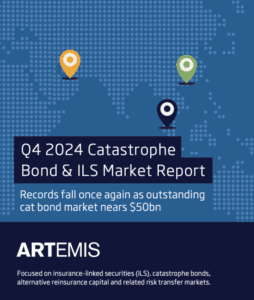Telematics and usage-based insurance on the rise: J.D. Power

Customer satisfaction with auto insurance dropped 12 points, on a 1,000 point scale, year-over-year, largely driven by dissatisfaction with the cost of premiums, according to J.D. Power’s 2023 U.S. Auto Insurance Study. Satisfaction with the price that customers pay for their auto insurance declined 25 points in the first half of 2023. Auto insurance price increases are higher, at 15.5%, than the other categories reported by the Consumer Price Index, which were an average of 4.9% in the past year.
J.D. Power reports that customers’ unhappiness with price increases is driving more carriers to offer usage-based insurance programs and telematics products, and more consumers to adopt them. Participation rates in UBI programs have more than doubled since 2016, from 8% to 17%. New customers have a UBI participation rate of 26%, according to the study.
“That’s a big number – one in four of the people who are buying a policy today are signing up for UBI,” said Mark Garrett, director of insurance intelligence at J.D. Power. “One of the things I’ve looked at before was that the customers who were adopting are the ones who are always interested in the technology. If we go back to 2016… that growth comes from the people who said they’d be interested if [UBI programs] were offered.”
UBI program participants also show higher price satisfaction, by 59 points, than non-participating customers. The study reports that customer satisfaction is highest among GEICO, Progressive and State Farm, at a three-way tie of 824 points. The study does note customer concerns with UBI and telematics technologies, however, as just 38% of customers responded that the data collected is “always accurate.”
Cambridge Mobile Telematics (CMT) research also indicates the increasing interest in UBI and telematics offerings, as the company’s consumer telematics enrollment grew 142% from 2020 to 2023. CMT offers a number of driving technology solutions, including its DriveWell Platform that gathers sensor data from internet-of-things devices such as dash cams, smartphones, connected vehicles and third-party data sources.
“These programs are giving people visibility into driving behaviors that’s never been available before, and through that feedback, they’re learning about how they perform on the road and they’re making the adjustments accordingly,” said Matt Fiorentino, vice president of marketing at CMT. “It’s a cycle where insurers are seeing great benefits from the programs, get the safest customers, reduce risks and retain customers for longer periods. Consumers are getting amazing benefits from programs that are saving a ton of money on insurance. They’re driving safer and making roads less risky, and as you see more of these benefits come forward, you’re going to see the programs grow in popularity.”
One challenge telematics providers face is the aggregation of data received from the technology, which is often fragmented and spread across multiple different sources. With no single comprehensive repository of driving data that spans the entire customer journey, insurance companies are faced with the task of aggregating and analyzing data from disparate sources.
Fiorentino noted that to address this challenge, insurers need to adapt their strategies and analytical capabilities and to be flexible in using data that is readily available and cost-effective, even if the information comes from diverse sources. This might involve integrating data from smartphones that track driving behavior, IoT devices that monitor vehicle diagnostics, connected cars that transmit real-time data, in-vehicle video that records incidents and third-party data sources that provide contextual information such as road conditions or traffic patterns.
“A number of years ago, the tech was relatively clunky and expensive and wasn’t super consumer friendly,” said Fiorentino.
CMT’s DriveWell suite of telematics products include the DriveWell Risk analytics solution, which assesses the safety or riskiness of a driver’s behavior, the DriveWell Crash and Claims product, which actively detects crashes and sends help while also enabling claims automation, and the DriveWell Engage solution, which focuses on building brand loyalty by offering incentives for safe driving behaviors.
“If you have a platform like CMT’s, it’s able to normalize the data across connected vehicles,” Fiorentino said. “If you have a platform that allows for the normalization of all the data across all the connected vehicles, IoT devices and phones, that allows you to scale the programs a lot more, and allows you to get the benefits of the program to more consumers’ hands.”
Roadzen is another provider that leverages telematics technology across the customer experience, using artificial intelligence and computer vision products with underwriting capabilities, API-led distribution and real-time claims processing.
“Roadzen operates end-to-end, right from providing safety using telematics to underwriting, distribution and claims,” said Rohan Malhotra, Roadzen CEO and co-founder. “Because we have licenses across the world, as a broker or a managing general agent to sell the insurance, we can actually use telematics data to price and sell the policies.”
Roadzen’s telematics solutions include an app-based software and sensors available on customers’ mobile phones to receive data, camera-based computer vision technology that recognizes driving behaviors and computer vision for vehicle inspection and claims processing.
“We’re using telematics to provide fleet safety and road safety, and to provide underwriting products to insurance clients, and lastly, to use telematics on the claims side, for FNOL (first notice of loss) and other processes which are currently manual, but making them automated. We operate end-to-end, and we are not just focused on one part of the value chain. A lot of insurtechs use it for underwriting and then sell the policy, but we want to use it throughout the value chain and have proactive engagement with the customer at all times,” said Malhotra.
Malhotra said that the insurance industry must adapt as the auto and mobility industries evolve, with the increasing popularity of autonomous, connected, electric and shared vehicles (ACES) driving change in data aggregation.
“We think the business that will fundamentally change is the insurance business, because once you’re getting the data from the car and you can actually interact with the software in it that fundamentally changes the underwriting, the distribution, the embedded distribution and the claims for a vehicle,” said Malhotra. “Roadzen is creating an operating system to be able to do that, and through our technology and our licensing capabilities across the world, we want to be in the center of that change.”


